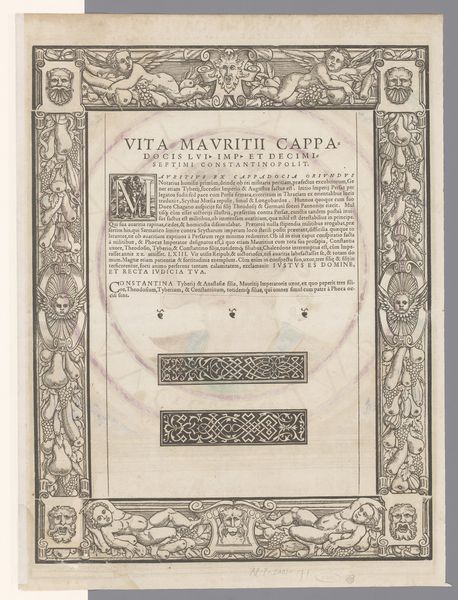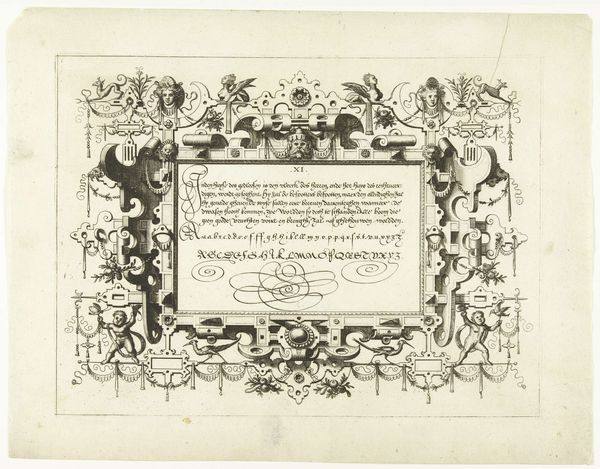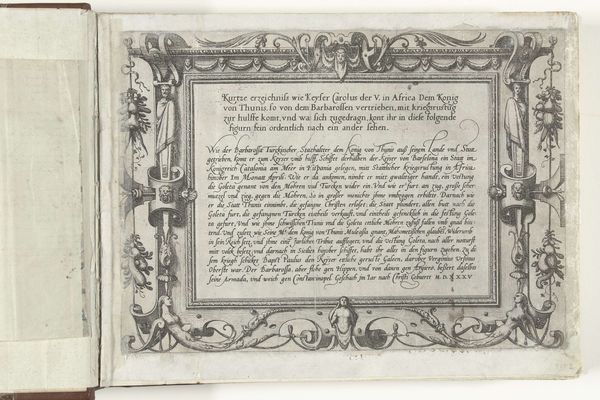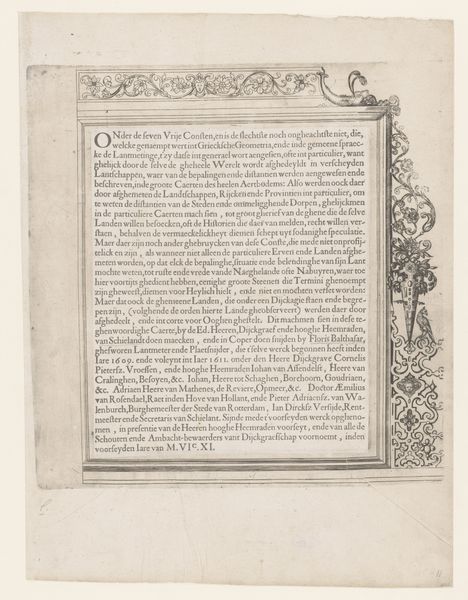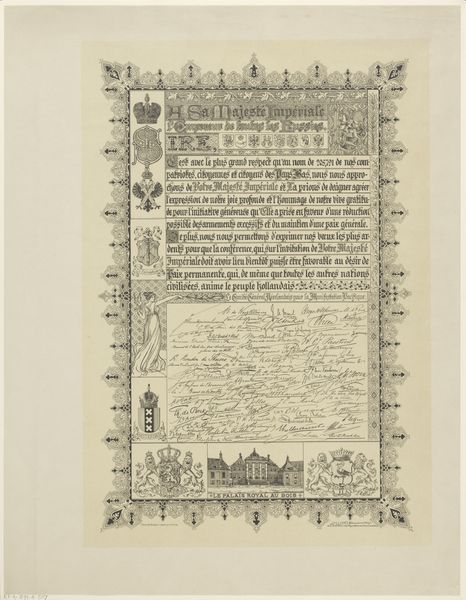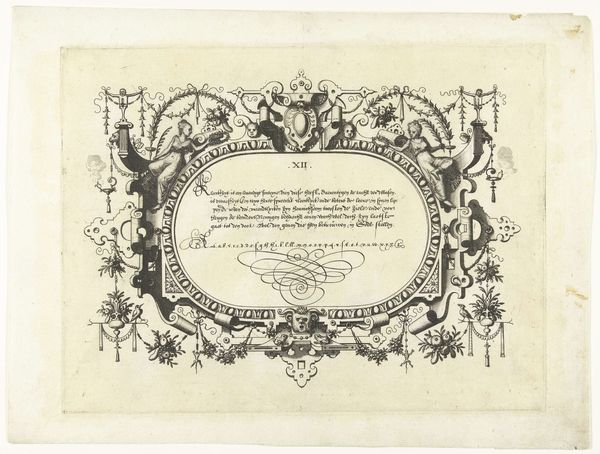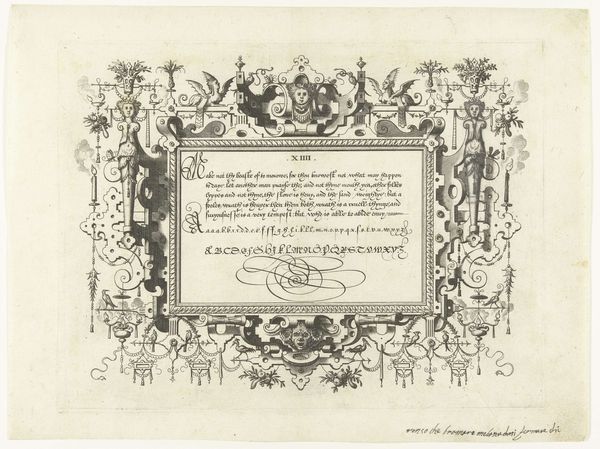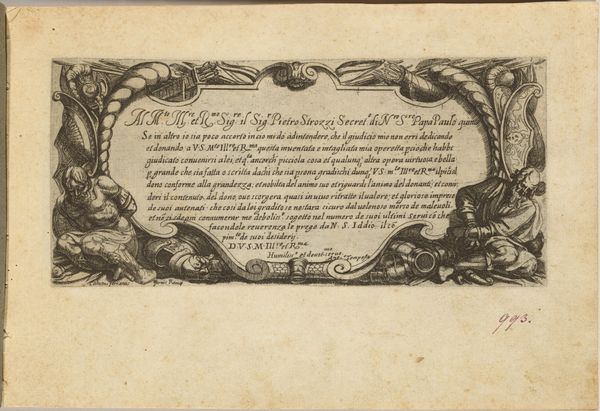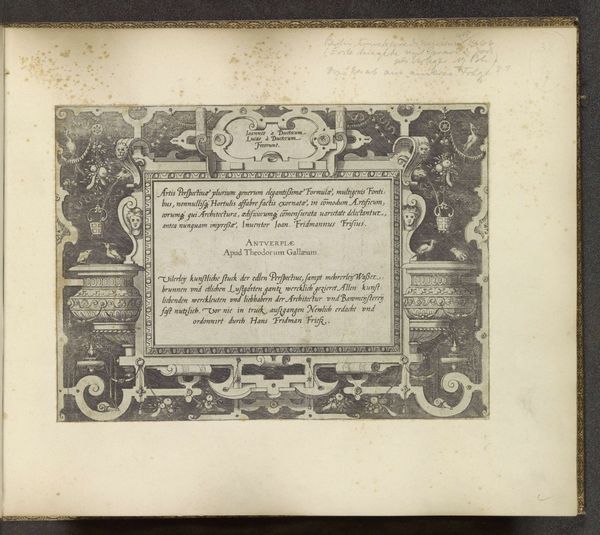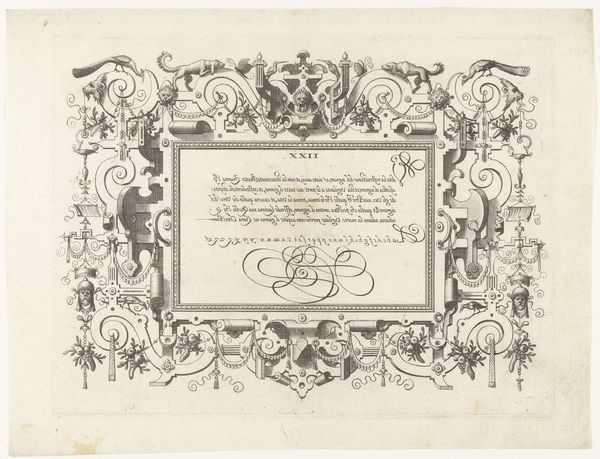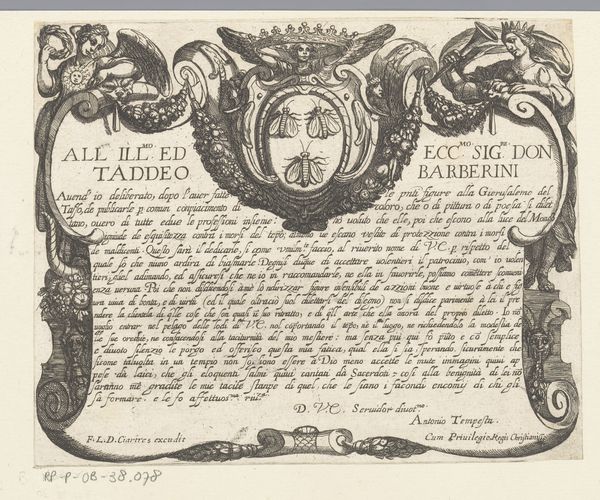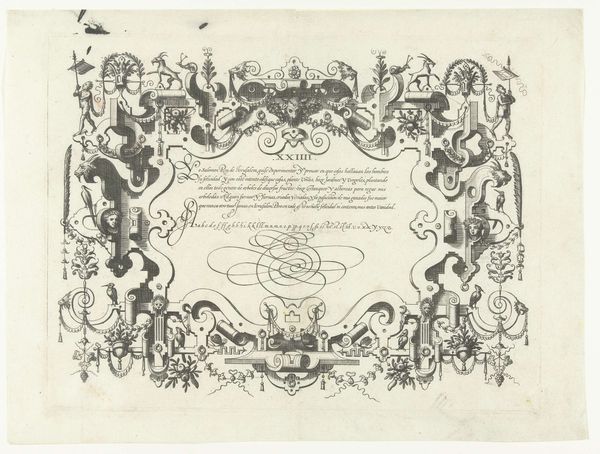
print, engraving
#
aged paper
#
toned paper
# print
#
old engraving style
#
11_renaissance
#
personal sketchbook
#
pen-ink sketch
#
pen and pencil
#
pen work
#
sketchbook drawing
#
watercolour illustration
#
history-painting
#
sketchbook art
#
engraving
Dimensions: height 314 mm, width 488 mm
Copyright: Rijks Museum: Open Domain
Curator: This is Jean Perrissin’s “Opdracht aan de lezer,” a print from 1570. Seeing the printed page, with its elaborate borders, I immediately think about the role of production in distributing knowledge and power during the Renaissance. What stands out to you? Editor: It’s fascinating how much detail Perrissin packed into a relatively small space. The pen work is so intricate! I’m curious, how did the means of printmaking affect who got to engage with knowledge back then? Curator: Exactly! Printmaking democratized access to information, moving it beyond the realm of the wealthy elite who could afford hand-copied manuscripts. But consider the socio-economic conditions of access. Who could *afford* to buy books, even printed ones? Who was literate? Editor: That's a good point. Even with printing, access wouldn't have been universal. It makes me wonder about the materials themselves: the paper, the ink, and who controlled those resources. Curator: Precisely! The quality of paper and ink speaks to the investment made in disseminating the text, indicating the perceived value of the work and its intended audience. And control of materials equaled control of dissemination. Now look at the composition, what about the decorative elements catches your eye? Editor: I am really drawn to the mythological figures intertwined within the borders. It makes me question the relationship between text and image in communicating meaning. Were the illustrations adding another layer of interpretation? Curator: Absolutely. These decorative elements elevate the text beyond mere functionality. By incorporating mythology and intricate designs, Perrissin positions this work within a tradition of luxury and artistic craftsmanship, subtly shaping the reader’s experience. So what do we take from looking at the materials and labour that went into creating the artwork? Editor: I hadn’t really considered that production affected access to art and written knowledge. Thank you! It opens my eyes to analyzing art with all of its aspects. Curator: Likewise, seeing the artwork as an active process of mediation allows us to reconsider our relationship with what has come before.
Comments
No comments
Be the first to comment and join the conversation on the ultimate creative platform.
